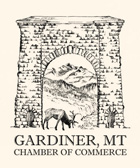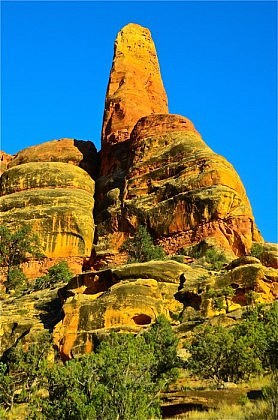Yes, the Greater Yellowstone Ecosystem grizzly has made an impressive comeback, and backpacking in Yellowstone means an encounter is more likely than at any time in decades. Nonetheless, the population is far from secure. Here’s why.
First, some high nutrition food sources have declined or are vulnerable to decline. For example, cutthroat trout in Yellowstone Lake have been decimated by non-native invasive lake trout. Whitebark pine nuts have dramatically declined as a food source throughout the ecosystem due to an explosion of native bark beetles (probably due to warming climate) and the exotic white pine blister rust fungus. Both of these pathogens have killed off huge numbers of whitebark pines. In addition, army cutworm moths are a fat-filled food source where great numbers of these insects gather in high elevation talus slopes on the east side of the ecosystem’s mountains. They are still plentiful, but are considered and treated (with pesticides) as an agricultural pest in the Great Plains, from where they migrate. Their future is uncertain. And of course, climate change is the great wild card; nobody knows how the great bear will fare in this unprecedented world of worrisome warming.
All of these threats are enough to give one pause about removing the grizzly from the endangered species list. But to me, the next three reasons are paramount. First, towns and rural areas in and around the Greater Yellowstone Ecosystem are among the fasting growing areas of the country. Subdivisions, new roads, fences, water diversions, power lines and a mushrooming problem of mechanized off-road travel — from four-wheel machines and dirt bikes to mountain bikes — are encroaching into grizzly habitat at an alarming rate. And as population grows, so does traffic and the number of inevitable vehicular collisions with wildlife, including bears. Poaching and fatal encounters with overzealous, armed humans are another inevitable mortality factor due to regional population growth. Even though backpacking in Yellowstone’s backcountry — and horse-packing for that matter — have not increased much in recent decades, ecosystem-wide human activity is exploding, and grizzly habitat is becoming more of an island — an island under siege — than ever before.
Second, the GYE griz population is a classic “island population”, contained within a “habitat island” (the Greater Yellowstone Ecosystem) with essentially no connectivity to other grizzly populations. Highways, including Interstate 90, plus ranches, fences, reservoirs, towns, mines and more, currently segregate Yellowstone grizzlies from their nearest kin 150 miles to the north in the Bob Marshall Wilderness Complex. And a Clinton Administration plan to reintroduce bears into the slightly closer Greater Salmon-Selway Wilderness Complex in central Idaho was squelched when Bush and Cheney took over the government in 2001. As conservation biologists warn, and as I explained in the previous installment of this series, isolated populations are vulnerable populations, unless they are very large. The Yellowstone grizzly population has come back from about 120 to maybe 800-900 bears, yes, but that’s still a small vulnerable isolated group of animals in a rapidly changing world.
Third, if grizzly bears are de-listed from “Threatened” status under the Endangered Species Act, they will be hunted. Like other wildlife species, grizzlies will be under state wildlife management jurisdiction and that means hunting licenses will be sold. Idaho, Wyoming and Montana are already formulating hunting plans for grizzly bears. The last thing the Yellowstone grizzly needs is increased human-caused mortality. It needs protection. And connectivity to other griz populations. And it needs the respect that humans can but often do not demonstrate when they debate whether to make it possible to coexist with wild creatures that need lots of wild habitat. That is the crux of the matter. We still have a chance to protect the bear and its habitat and to provide and restore connectivity to other grizzly populations. The choice is ours. If we cannot do it right in the Greater Yellowstone, then where?
Fairly, fitness and medicines are playing on the minds of folk all around the World. Online drugstores provides best-quality prescription medicaments and other medications. One of the most pops drug is Viagra. This article tell more about “http://cialis-price.biz“. Nearly every man knows about “http://cialis-price.biz“. Other matter we should is “http://cialis-price.biz“. Albeit sex is not vital for good heartiness, it’s no doubt good for you. Other medicaments may interact with this cure, including recipe herbal products. Not all feasible interactions are listed in rate medication guide. Stop using this remedy and get medical help if you have sudden vision loss.



